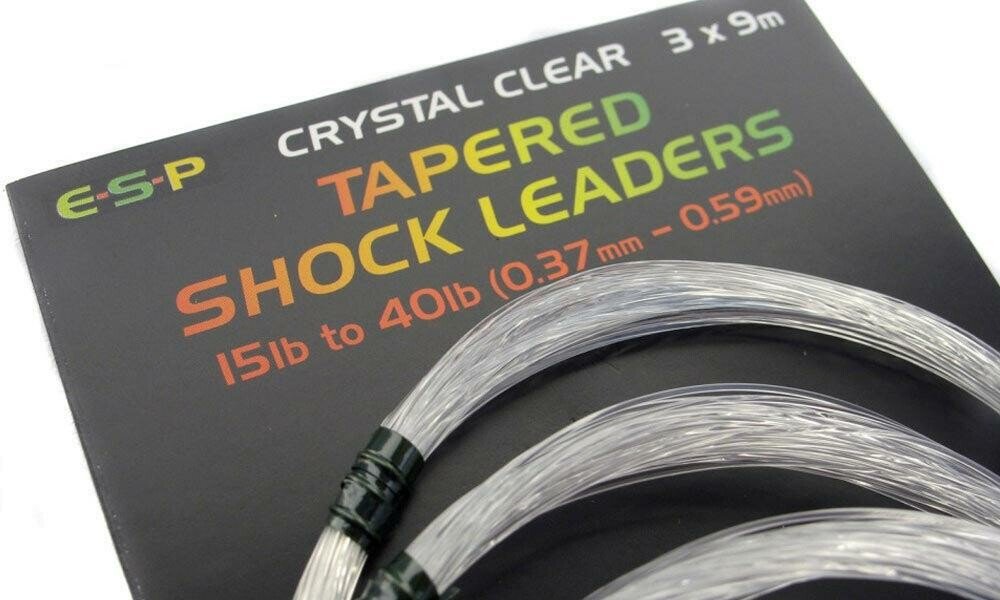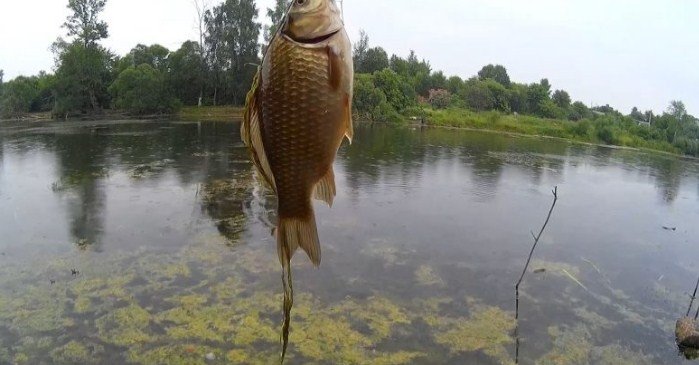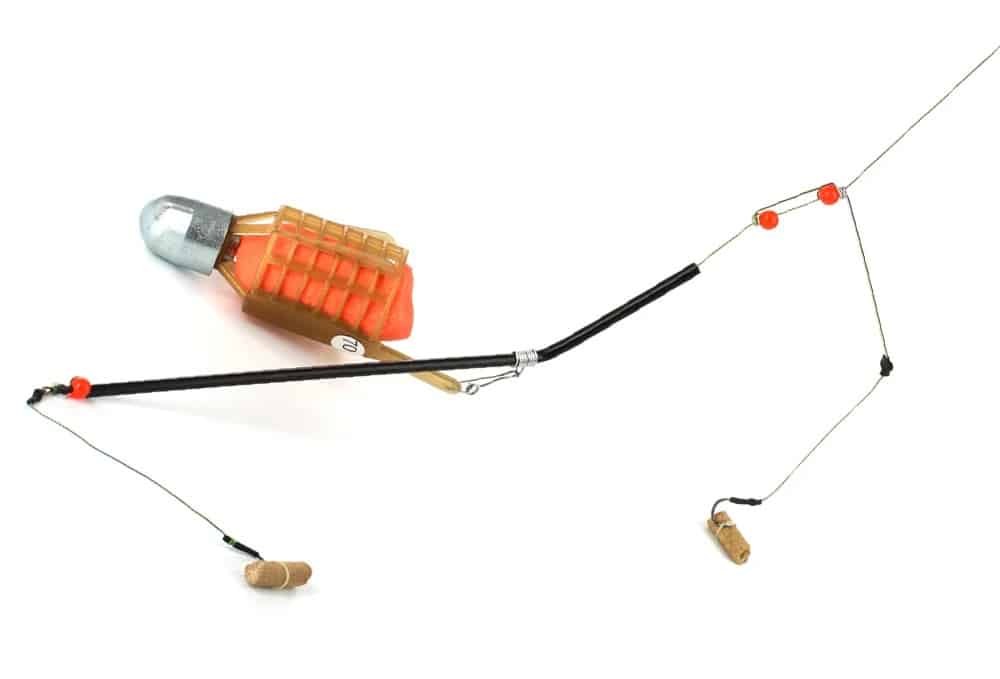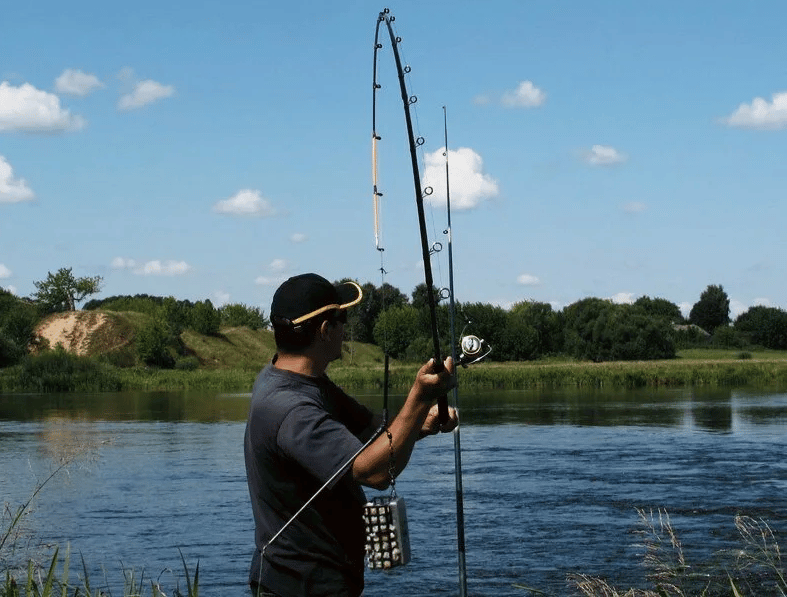When fishing with heavy tackle, it often happens that the line breaks when casting. This happens due to the fact that when you swing the fishing rod and send the rig to the right place, it has increased loads. If the fishing line has previously been damaged by stones or shells at the bottom, then after a while, a break is inevitable. The tackle flies off
when casting constantly at the most unexpected moment, and then it must be knitted again. To prevent this , a shock leader is used in
feeder and
carp fishing .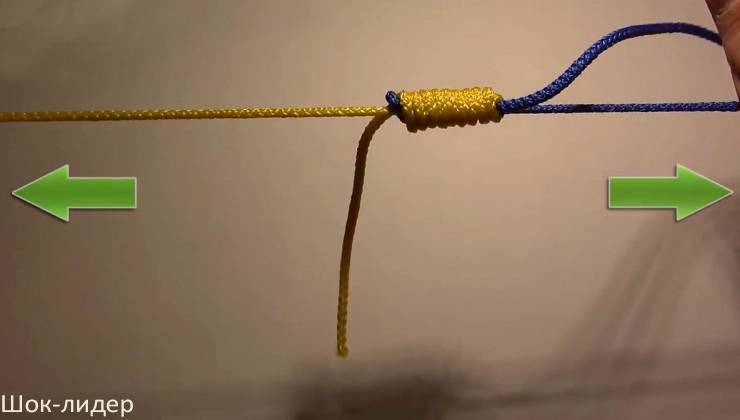
- What is a shock leader and why is he needed in fishing
- Advantages and disadvantages of the solution
- Buy or knit yourself?
- Manufacturing materials
- Fluorocarbon shock leader
- Network
- Monofilament line
- Which node to choose for a shock leader
- Double Grinner
- Bloody knot
- Carrot
- Albright
- Upgraded Albright
- Clinch
- Поделиться ссылкой:
What is a shock leader and why is he needed in fishing
A shock leader is a piece of line length (usually 2-3 to 6-12 meters) tied to the main line. Next, a weight is attached, a spring-
feeder, nozzle and other elements of the tackle. During the use of the shock leader, it is he who is responsible for the operation of the line when the rod is swinging during the casting process. If, for example, the breaking force of the main line is 4 kg, and the permissible load that falls on the shock leader is 12 kg, then heavy loads or springs can already be used. Moreover, a rather thin main line will allow for long casts without creating any special resistance to the underwater current. The classic shock leader for carp fishing is chosen in 2 lengths of the rod used. When fishing at short distances, this size can be reduced to increase the sensitivity of the rig. The shock leader is used not only for carp fishing, but also for spinning. The heavier the tackle, the more expedient its use. It is especially relevant in carp fishing. Only fits for one fishing trip,on the next one you need to install a new one.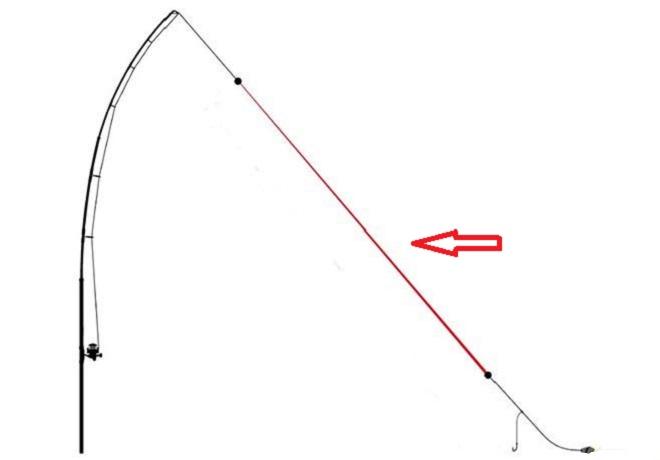
Advantages and disadvantages of the solution
The main advantage of the shock leader for the feeder is that it avoids shooting the feeder with the bait during casting. This is especially true when fishing at a very long distance of 90-120 meters. It also prevents line breakage when playing fish on an extreme bottom. Since the shock leader is larger in diameter, unlike the main line, it is more difficult to grind it against stones. These are the main, but not the only advantages and the situation for which a shock leader is needed:
- The shock leader, made from heavy monofilament line, will protect your finger from cutting when casting heavy loads over long distances. But just for this reason, you do not need to use the leader, it is enough to buy a fingertip for this.
- It helps when fishing for trophy specimens in the last meters near the coast , it is often here that the carp makes the last strong dash to leave.
- If the leader is made of mono, then the latter, when fishing, due to its elasticity, plays the role of a shock absorber . This, of course, is not the same as tying a feeder rubber band, but in some cases it also helps when fishing. You also need to take into account that for this, the leader is knitted at least 15 meters. And in this case, the other side of the coin arises, the longer this thick segment, the more the sensitivity of the rig decreases.
The disadvantages include:
- Aquatic vegetation often clings to the knot at the junction , which then clogs the rod rings.
- The knot, when connecting the line and the leader, sometimes does not pass well through the rings of the rod , therefore, the casting distance deteriorates and after a while it simply spoils the rings.
- Windage increases with wind . In this case, it is necessary to clarify that the farther the distance to the bait spot, the lower the overall windage of the rig due to the presence of a thin main line.
- The shock leader from the monofilament worsens the sensitivity of the tackle , so you can miss the bite of the carp.
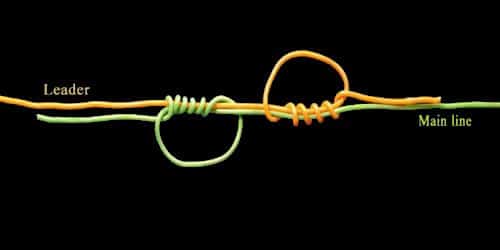
Buy or knit yourself?
As a rule, fishermen prefer purchased leaders, they are easy to tie to the line. The main advantage is low cost. Moreover, purchased shockleaders do an excellent job with their main task and there are enough of them for amateur fishing. However, there is another option – to buy a shock leader for carp fishing. Its advantage lies in the fact that it copes much better with increased loads and is much stronger. But this leader is quite expensive – the cost of branded products starts at $ 5 per piece. You can also buy a cone shock leader. This is a piece of fishing line where one end is thicker than the other in diameter.
Manufacturing materials
Installing a shock leader for a feeder can be done from:
- fluorocarbon;
- cord;
- monofilament fishing line.
https://youtu.be/mywOEaLbtDk
Fluorocarbon shock leader
Fluorocarbon line is the best choice when fishing on the bottom with rocks and shells. It is as elastic and abrasion resistant as possible. According to this indicator, fluorocarbon significantly surpasses the cord and even more monofilament fishing line. Its disadvantage is that, due to the considerable thickness and rigidity, the fluric is more difficult to tie, unlike a monofilament or cord.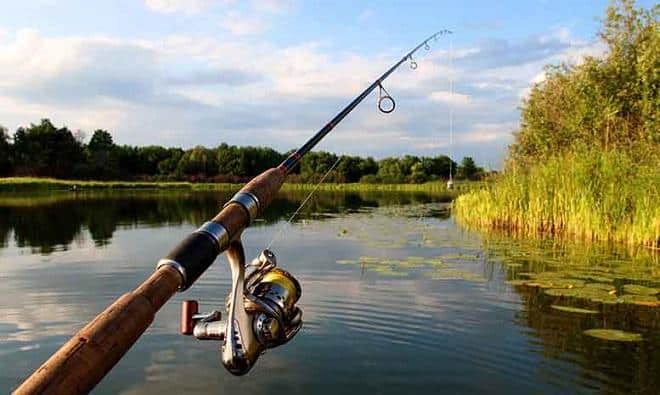
Network
Braided cord can be used as another option. It has the highest tensile strength at the smallest cross-section. Due to the small diameter, the braid is practically not carried away by the current, this is especially important when fishing on rivers. Also, the advantages include non-extensibility. This will be especially useful when winding the braid as the main line, as this greatly increases the sensitivity of the rig. If only a shock leader is made of a cord, then the increase in sensitivity may not be so much noticeable, but it is there. At the same time, the use of braids as a leader is not always the best solution. If a line is used, it is important to follow
the casting technique.… If this is not done, the rig will fall to your feet, and the braid will quickly fly off the reel. It is also easy to injure your finger while using the cord as a leader. For this reason, it is advisable to purchase a casting glove to protect against these troubles. Due to its non-extensibility, the cord can poorly withstand extreme loads, in contrast to the same monofilament and fluric. At the same time, it is much faster erased on the rocky bottom. Therefore, it is recommended to choose a shock leader made of braid for a clean bottom.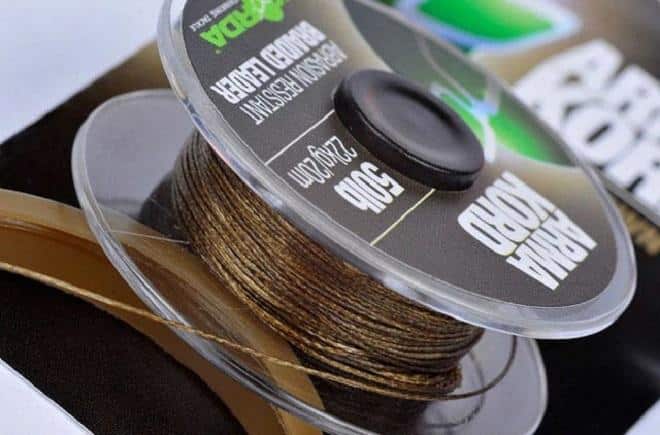
Attention: It is necessary to choose cords with shock leader written on the packaging. This means that the braid is specially made for this very purpose.
Monofilament line
The simplest and cheapest way is to choose a monofilament line. The price of even a very high-quality monofilament is affordable, and this line may well cope with its main task during installation as a leader.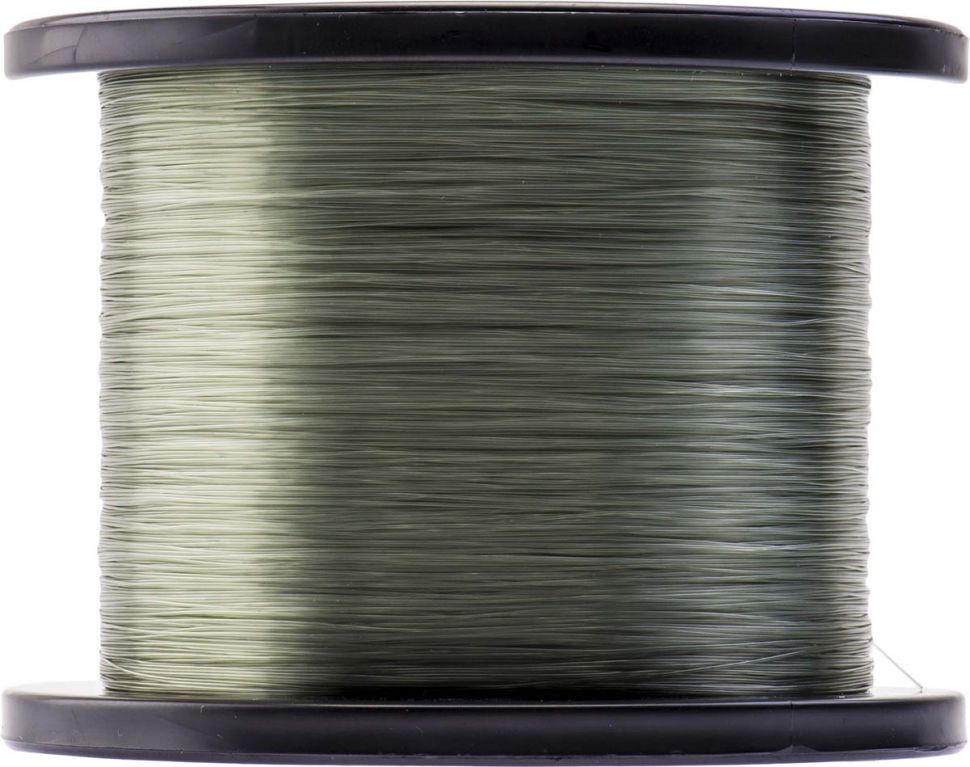 You can use a monofilament with a cross section of 0.3-0.45 mm. Most often, fishing line with a diameter of 0.25-0.28 mm is enough. If you want to throw in tackle weighing 100 grams, then a section of 0.28 mm is suitable, for rigs over 100 grams – 0.35 mm. To the tapered leader, the assembly must be knitted from the side where the thickness of the line is greater. So, it is the thickening that accounts for the entire load when throwing the gear. Moreover, the other end, tied to the main line, has the same section as it itself. Due to this, the knot comes out small and easier to pass through the rings during casting.
You can use a monofilament with a cross section of 0.3-0.45 mm. Most often, fishing line with a diameter of 0.25-0.28 mm is enough. If you want to throw in tackle weighing 100 grams, then a section of 0.28 mm is suitable, for rigs over 100 grams – 0.35 mm. To the tapered leader, the assembly must be knitted from the side where the thickness of the line is greater. So, it is the thickening that accounts for the entire load when throwing the gear. Moreover, the other end, tied to the main line, has the same section as it itself. Due to this, the knot comes out small and easier to pass through the rings during casting.
Which node to choose for a shock leader
Then, when the shock leader has been selected, it is necessary to tie it correctly. Not all knots are suitable for a strong connection.
Double Grinner
The Double Grinner is great if you need a knot for a braided and monofilament shock leader. To make a knot, you will need:
- fold both ends together and wrap the cord 6 times around the fishing line, and then thread its end into the loop that appears;
- the same must be done with the fishing line;
- the knot is wetted and tightened.
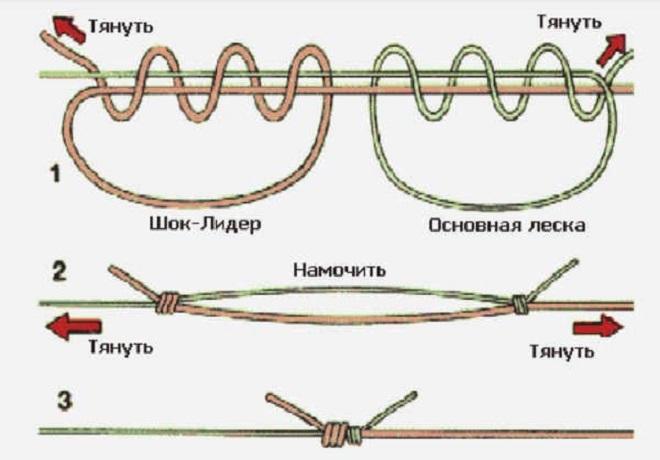
Bloody knot
This knot for a shock leader is suitable if you need to tie a cord and mono line, or tie two ends of a fishing line that differ in thickness. The node is done as follows:
- both lines are folded;
- the end of one makes 2-3 turns around the second;
- after that, the same is repeated with another line;
- the loop moves apart in the center of the twist and is threaded into its ends of the fishing line towards each other.
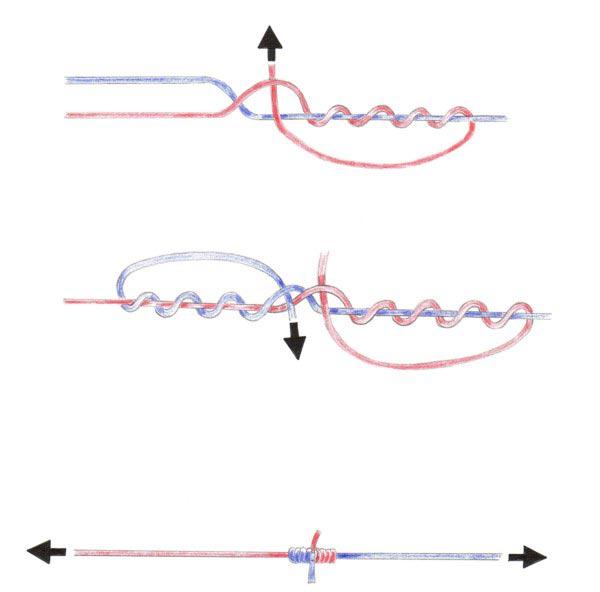
Carrot
The carrot knot for the shock leader is so called because of its special shape in the form of a cone. Its main advantage is that it passes with ease when thrown through the rings. To install it you need:
- tie the main knot at the end of the leader, while it does not tighten;
- the main line is threaded here;
- it is done at first 10 turns in one direction, then the same amount in the other;
- again, the main line is threaded into the knot on the leader;
- everything drags on.
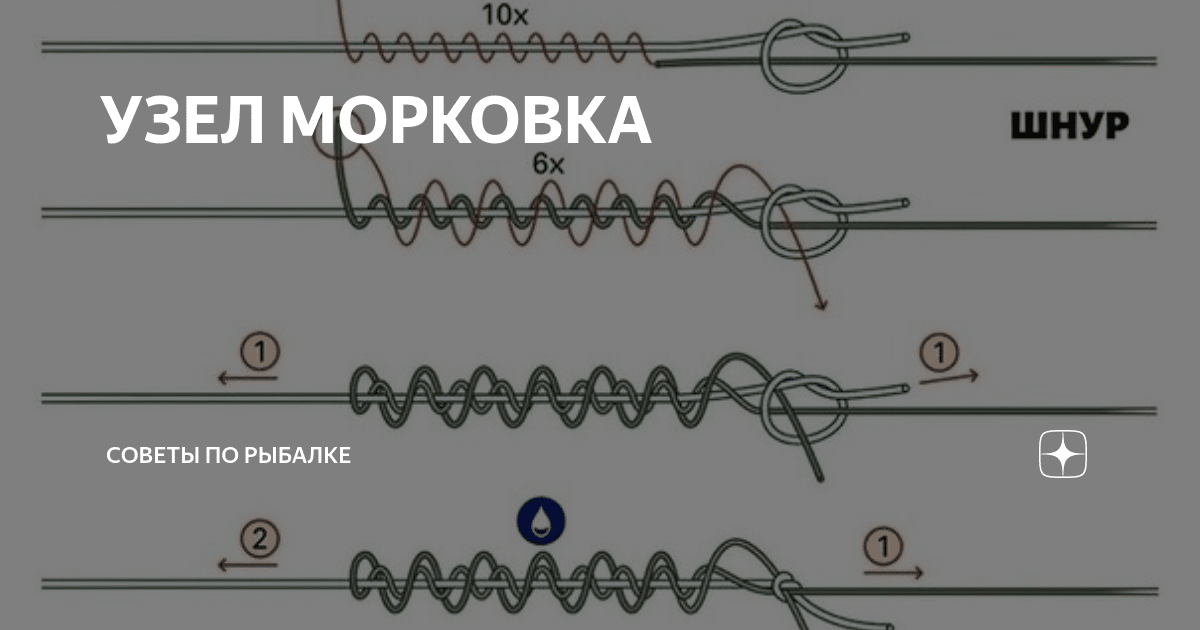 Carrot knot for shock leader – visual video: https://youtu.be/hLwNv4J_rdA
Carrot knot for shock leader – visual video: https://youtu.be/hLwNv4J_rdA
Albright
The Albright knot for the shock leader has its advantage, which is that it comes out rather narrow, due to this, there is practically no resistance during the cast. To link it, you must:
- fold the end of the leader in half;
- skip the main line into the resulting loop;
- perform up to 12 turns of the main line around the leader;
- skip the main line into the loop;
- tie a knot.
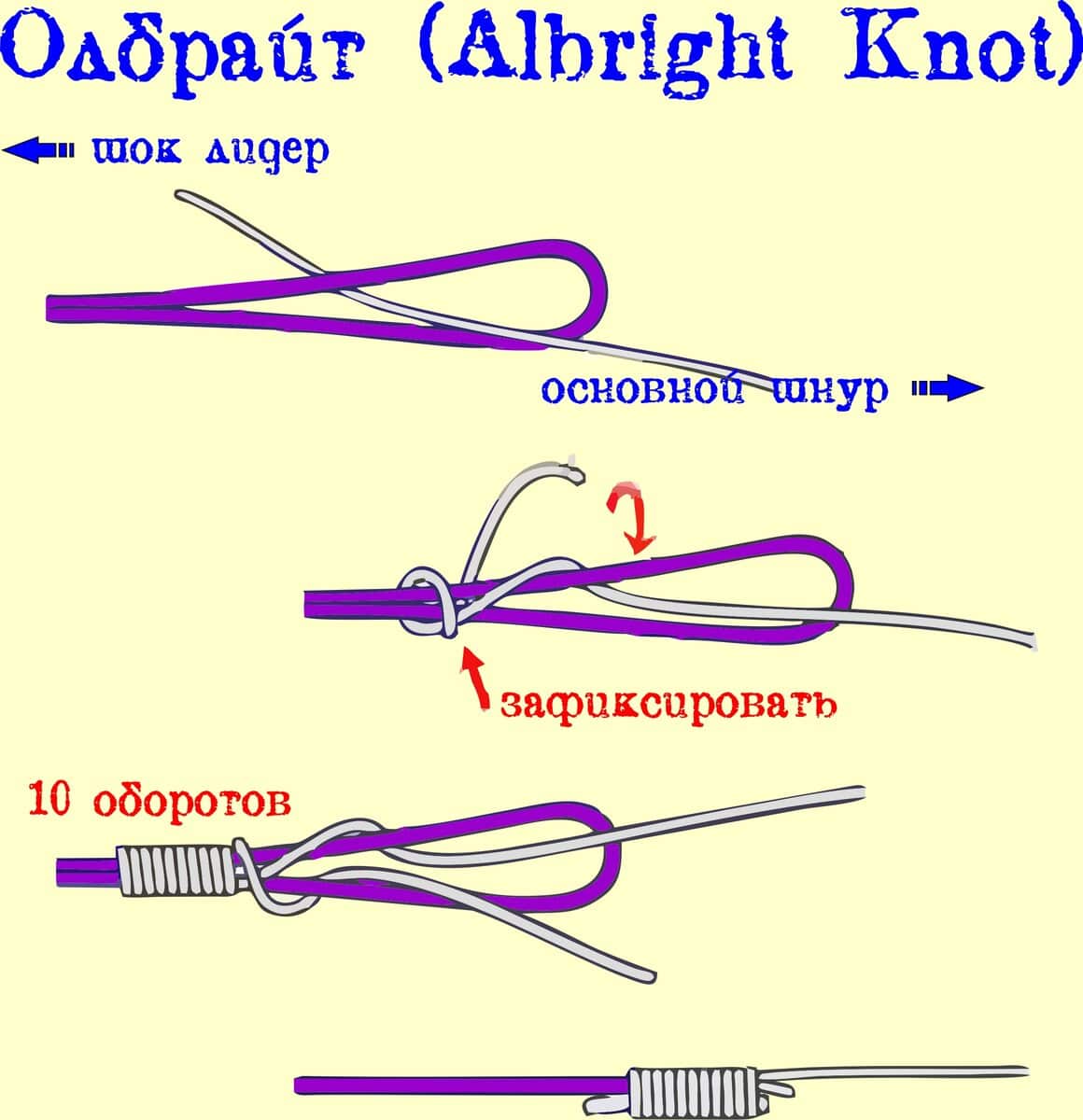
Upgraded Albright
Like standard Albright, it turns out to be small, and has high strength. To knit a knot you will need:
- fold the end of the leader into a loop;
- pass the end of the main line through it;
- perform up to 12 turns of the main line around the leader towards the top of the loop;
- make the main line up to 7 turns per loop;
- to tie a knot.
Clinch
The simplest to install and at the same time durable knot. As a rule, it is used for crocheting. But it is sometimes used to attach the leader’s shock to fishing line or fluorocarbon. For this you need:
- tie a loop at the end of the main line;
- skip the end of the leader into it;
- perform 7 turns with the leader around you;
- pass its end into the loop that was formed by the first turn;
- to tie a knot.

